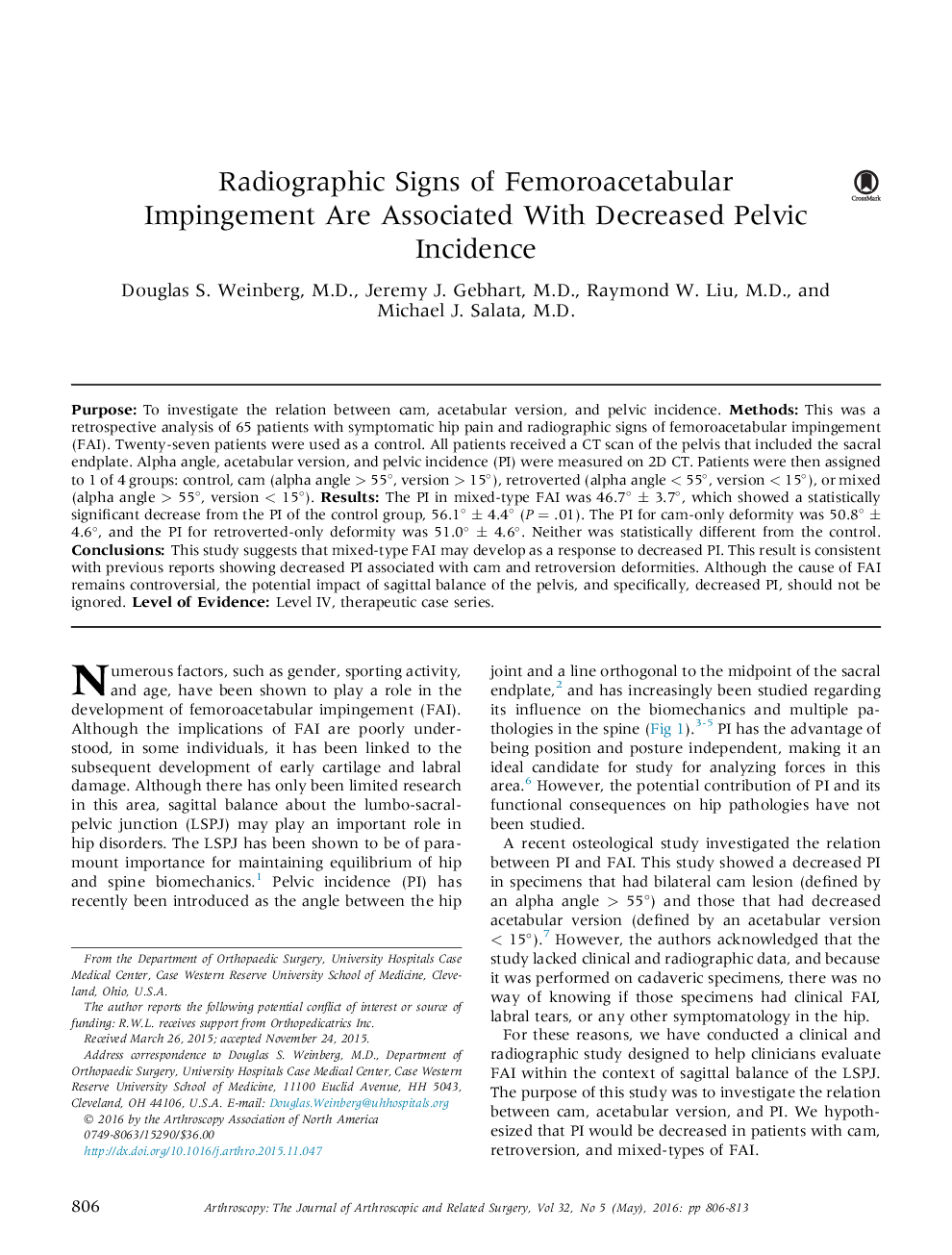| Article ID | Journal | Published Year | Pages | File Type |
|---|---|---|---|---|
| 4042045 | Arthroscopy: The Journal of Arthroscopic & Related Surgery | 2016 | 8 Pages |
PurposeTo investigate the relation between cam, acetabular version, and pelvic incidence.MethodsThis was a retrospective analysis of 65 patients with symptomatic hip pain and radiographic signs of femoroacetabular impingement (FAI). Twenty-seven patients were used as a control. All patients received a CT scan of the pelvis that included the sacral endplate. Alpha angle, acetabular version, and pelvic incidence (PI) were measured on 2D CT. Patients were then assigned to 1 of 4 groups: control, cam (alpha angle > 55°, version > 15°), retroverted (alpha angle < 55°, version < 15°), or mixed (alpha angle > 55°, version < 15°).ResultsThe PI in mixed-type FAI was 46.7° ± 3.7°, which showed a statistically significant decrease from the PI of the control group, 56.1° ± 4.4° (P = .01). The PI for cam-only deformity was 50.8° ± 4.6°, and the PI for retroverted-only deformity was 51.0° ± 4.6°. Neither was statistically different from the control.ConclusionsThis study suggests that mixed-type FAI may develop as a response to decreased PI. This result is consistent with previous reports showing decreased PI associated with cam and retroversion deformities. Although the cause of FAI remains controversial, the potential impact of sagittal balance of the pelvis, and specifically, decreased PI, should not be ignored.Level of EvidenceLevel IV, therapeutic case series.
